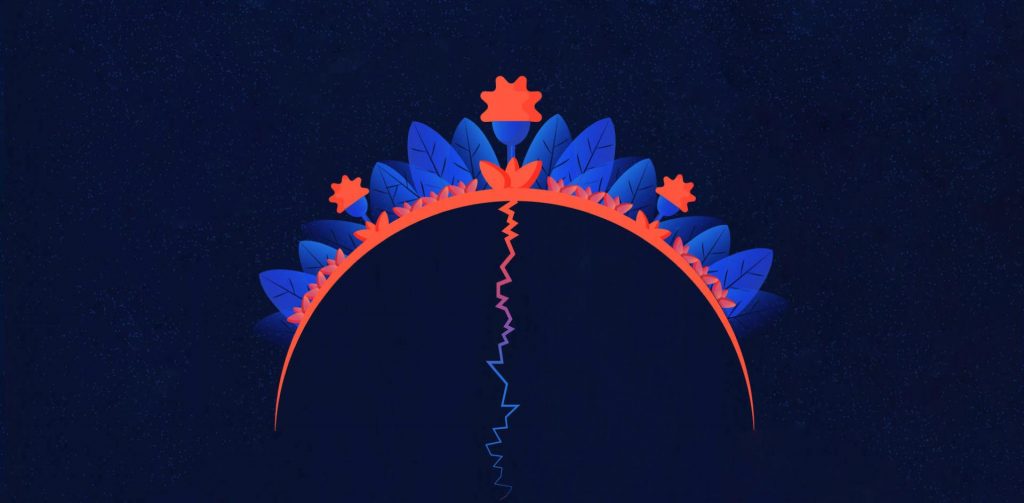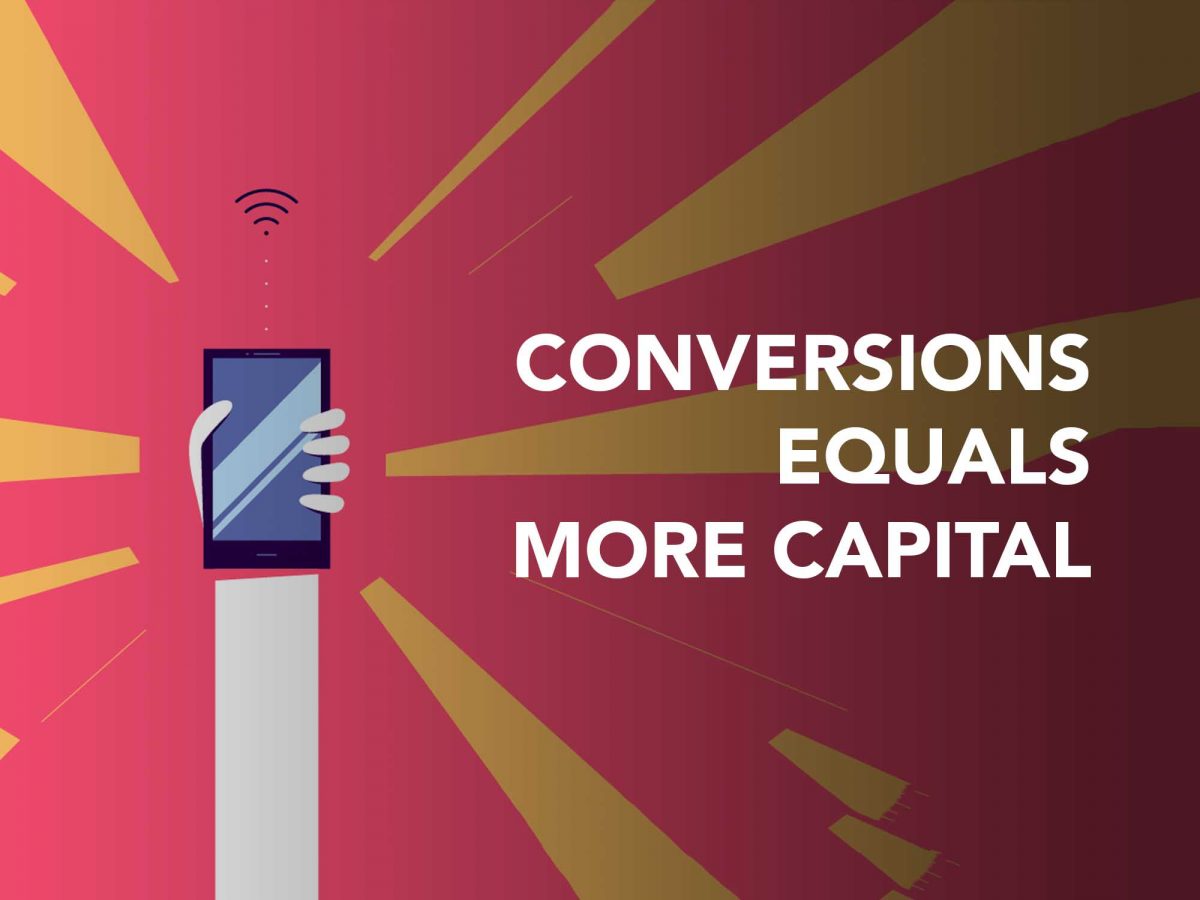Let’s talk SaaS conversions.
More importantly, how to increase conversions and, thus, revenue.
You know, the favourite topic: the moment your customer’s hand exchanges with your SaaS and a green arrow appears.
If you’re saying the green arrow is not one of your favourites, I don’t know what could be. The only thing is, there are different types of conversions, so this article will make an addition to the Chagency_ glossary.
“Conversion” is a term that’s too broad for hyper-analytical people. This word is an umbrella for both people who have made their first payment or for those who have made their fifth (albeit upgrading) payment.
In theory, you can call a conversion even an event like signing up for the free plan. If you’re pedantic enough to dispute that, here’s the definition.
conversion
/kənˈvəːʃ(ə)n/
Noun
- the process of changing or causing something to change from one form to another.
Indeed there is change from “website visitor” status to “subscribed to the free plan”.
So, how do we categorise conversions?
1. Hypersoft Conversion
A subscription to a free plan — something that doesn’t impact you positively at the moment.
This implies a user that’s either on the fence or that doesn’t have the budget yet to jump on a paid plan. Whether you offer actual free plans depends on how long-term your vision is and what you want out of your company.
This is where I insist the most with my other articles, given that this kind of conversion is overlooked with puny thinking like “Give them something free but don’t give them enough so that free version is enough.”
If you can afford not to think like that, by all means, do it. People overlook hypersoft conversions as they don’t see the ROI tomorrow or in a month.
Once again, if the next Leonardo Da Vinci comes from under your rooftop, he will remember that forever.
2. Soft Conversion
A subscription to a paid plan. Hooray, this is your bread and butter. Everything’s good under the sun as long as these happen — is that enough, though?
If you’ve been in business for a bit of time you’ll find out that it isn’t. You’ll see how people churn out — I actually hope that happens to you! Because sooner or later it happens (see: Uber) and it’s better to learn that quicker than 6 years down the line with investors or, worse, as a public company.
What gives a soft conversion special characteristics? The fact that you can’t tell at the moment whether the user will stick with you for some time or not.
Unless…
Unless you get to talk to them directly — and I mean actual talk, 1 on 1 conversations, not an automated email with “Hey this is the CEO – [attached hand-written signature]” and then, in the footer, one can see the classic MailChimp section with a button called “Unsubscribe”.
That works in the opposite direction as it doesn’t feel authentic at all.
One-on-one is a way. Another way is to create a community for the users. I’ve seen Facebook groups do wonders for SaaS companies, increasing all relevant metrics like user churn or LTV. The long story is for another article, but the short version is: once you see me, the user, engaging in a forum (let’s say), you know I’m considering staying for some time.
3. Hard Conversion
This is the holy grail. People who have made a hard conversion have either subscribed yearly, since it’s more of a long-term commitment than sticking with your product for 30 days, or have declared “loyalty” in another form.
However, it’s not as simple as that. You would need here relevant data to see how likely they are to stick around.
Their fifth consecutive recurring payment would signal of a stable relationship — I would use transaction number 5 as a benchmark, though if you feel another number would serve better in your case, it’s by no means a standard.
Industries are varying too wildly to have a standard in SaaS, remember that. Whoever is giving you a benchmark figure for churn or other indicators that are varying by industry is likely to be selling you snake oil.
4. Hyperhard Conversion
Users who are committing to a long-term contract or are moving to your most expensive plan for a long period of time.
I understand this kind of conversion might not exist for some, given that I’m looking mainly at enterprise deals here.
Some SaaS products are not meant for teams/enterprise but this kind of conversion is what you should be looking to integrate at some point in the company.
And if your reaction is to say “That’s not going to ever happen to me, given my product”, I’d say think again, since you can (and hopefully will) integrate extra core features to your product. Just because you might not be having features for teams right now doesn’t mean you shouldn’t be looking to have them in the future.
A hyperhard conversion is less science than other types of conversions and more art. Customer acquisition cost is harder to quantify since it becomes pretty fluid.
Advertising agencies, for instance, rely mostly on collaborations like these — hence why you might be watching Mad Men and ask yourself what kind of dinner they’ll be having next in order to secure a deal. Big advertising agencies usually don’t even take up on project work (soft conversion) so that they can focus on hyperhard conversions.
Why do all these matter?
The closer to the sun, the better. Most SaaS owners spend their time neglecting the 1st type of conversions and being just slightly aware of number 3. I’m not saying soft conversions are not to be taken care of but here’s a question:
How much are you facilitating the track from a soft to a hard conversion?
If you isolate hard conversions and treat this user journey separately, does it make sense why it will bring you more capital?
In other words, I’m advocating for having a look at what the user that converted softly does and what she or he needs in order to board for the long-term.
That means that they should not only be less likely to churn, but to also keep in mind what contributes towards user retention. If you’re not paying attention to the latter, then they will indeed stay, but never too convinced of the value provided.

How to ensure that users convert properly?
I’ll spare you of the usual literature — you can Google it (if you haven’t already) and find the most boring reads that will reap your time for basic stuff like: follow-up with emails, put up forms for user feedback, blah blah blah.
I’m looking at two specific ways:
- Add new core features, ideally features that enforce the network effect or the lock-in effect.
2. Remind your user about the value your product delivers.
Bonus: if you want a special concept for #2, here it is:
The bottom line
- Hypersoft conversion – “nothing” to free plan
- Soft conversion – “nothing” to paid plan
- Hard conversion – recurring payments that show stability
- Hyperhard conversion – something to long-term contract or upsell to most expensive paid plan
Why does this matter? Because you should damn well pave the way from #2 to #3. That’s the sanity in “Revenue is vanity, profit is sanity”.
About Ch Daniel
I run Chagency_, an experiences design agency — we help SaaS CEOs reduce user churn. I write daily on this topic and in similar areas. Here are my best pieces.
If I’ve helped you, follow me here and reach out: LinkedIn | Twitter | Email | Quora | YouTube
I’ve also founded an app (among others) that has got 6 digits in # of users — chdaniel.com/app
If you want a more of a personal connection, here’s how to have that.
Illustration Credits: Anas Alaa, Mahmoud Emam




